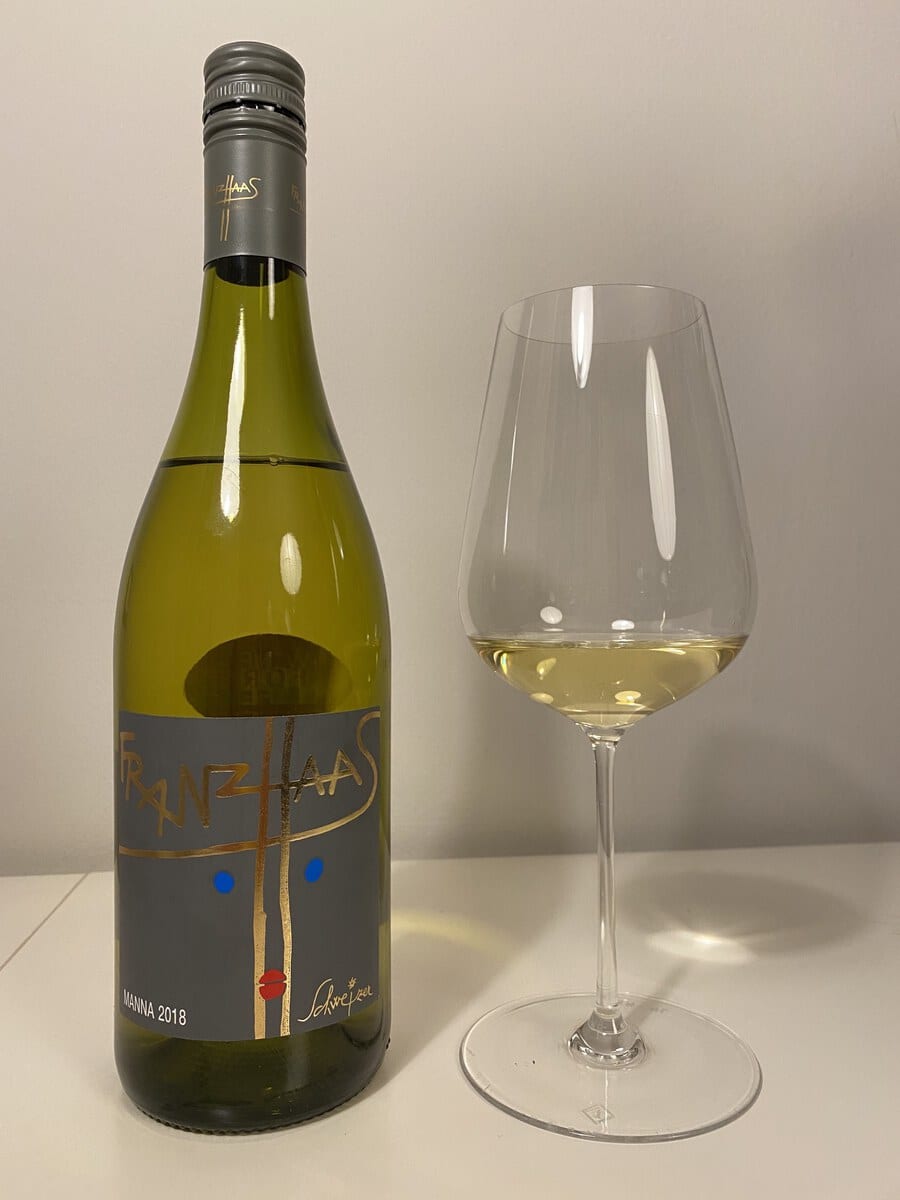Franz Haas "Manna" 2018
Blend of Riesling / Chardonnay / Sauvignon blanc / GewürztraminerComplex, sapid, mineral. Tomato leaf, tinned pineapple, rose, lychees.
Tasting Notes
The 2018 Franz Haaz Manna is light yellow colour.
The nose is quite complex; it opens with tomato leaf it quickly blossom with pear, tinned pineapple, rose and lychees. Manna is distinctively mineral.
On the mouth it’s warm and fresh promising really good aging potential. On the palate I find it attractive, sapid and mineral with a hint of bitter almond.
The finish is long and reminiscent of bitter almond.

|
|
Franz Haas |
|
|
Manna |
|
|
White & Still |
|
|
Italy |
|
|
Alto Adige |
|
|
Riesling, Chardonnay, Sauvignon blanc, Gewürztraminer |
|
|
2018 |
|
|
How it's made
Chardonnay and Sauvignon Blanc ferment in barrique. Riesling and Gewürztraminer ferment in stainless steel tanks.
Learn more
Riesling
White grape variety
Riesling is a white grape variety native to the Rhine Valley. Riesling is a flowery, almost perfumed grape variety with high acidity and flowery, almost perfumed aromas. It’s used to make white wines that are dry, semi-sweet, sweet, and sparkling. Riesling wines are almost never oaked and are normally varietally pure. Riesling was the world’s 20th most planted variety in 2004, with 48,700 hectares, but it is typically included in the “top three” white wine varieties, alongside Chardonnay and Sauvignon blanc, in terms of value for quality wines. Riesling is a terroir-expressive variety, which means that the character of Riesling wines is strongly influenced by the wine’s roots.
Link to here... | Derived from 'Riesling' on WikipediaChardonnay
Green-skinned grape variety used in wine production
Chardonnay is a grape variety with a green skin that is used to make white wine. The grape variety originated in eastern France’s Burgundy wine region, but it is now grown all over the world, from England to New Zealand. Growing Chardonnay is seen as a rite of passage for new and emerging wine regions, as well as an easy entry into the international wine market.
Link to here... | Derived from 'Chardonnay' on WikipediaSauvignon blanc
Green-skinned grape variety that originates from the Bordeaux region of France
Sauvignon blanc is a green-skinned grape variety indigenous to France’s Bordeaux region. Due to its early origins as an indigenous grape in South West France, the grape’s name is most likely derived from the French words sauvage (“wild”) and blanc (“white”). It’s believed to be a descendant of Savagnin. Sauvignon blanc is a crisp, dry, and refreshing white varietal wine grown in many wine regions around the world. The grape is also used in the popular Sauternes and Barsac dessert wines. Sauvignon blanc is grown extensively in France, Chile, Romania, Canada, Australia, New Zealand, South Africa, Bulgaria, and the United States’ states of Washington and California. Some Sauvignon blancs from the New World, especially those from California, are referred to as “Fumé Blanc,” a marketing term coined by Robert Mondavi to refer to Pouilly-Fumé.
Link to here... | Derived from 'Sauvignon blanc' on WikipediaGewürztraminer
Wine grape
Gewürztraminer is a fragrant white wine grape variety that performs best in cooler climates. It is often referred to as Gewürz in English, and it is written Gewurztraminer in English and French. Gewürztraminer is a white wine grape with a pink to red skin color, as opposed to the blue to black-skinned varieties that are generally referred to as “red wine grapes.” The grape has a high natural sugar content, and the wines are white and off-dry, with a flamboyant lychee bouquet. Lychees and Gewürztraminer have the same fragrance compounds. Roses, passion fruit, and floral notes can be found in dry Gewürztraminers. It’s not rare to see any spritz.
Link to here... | Derived from 'Gewürztraminer' on WikipediaBarrel size
The barrel size is rather important and matters for two reasons.
-
One; wine notes (also) depends on the chemical compounds in the wood - almost always oak. The “flavours” associated with oak fermenting are vanilla, coconut, cinnamon, clove among others.
-
Two; wine will oxidise in barrels. That is because some oxygen reaches the wine through the cask, via its cracks and joints.
Big vs Small barrel
In a bigger vessel the ratio of wood to wine will be smaller than in a smaller barrel.
The same applies to the ratio of oxygen to wine.
So, wine fermenting in a foudre will oxidise less than wine fermenting in a demi-barrique.
It will also be in contact with less wood and its compounds. Thus wine from a bigger cask will show less of those notes associated with oak fermentation.
Some common barrel sizes are:
- Demi-Barrique : 112L;
- Bordelaise : 225L;
- Bourguigone: 228L;
- American Oak Hogshead: 300L – (79 US Gallons)
- Puncheon 500L;
- Demi-Muid 600L;
- Foudre 2000-12000L;

